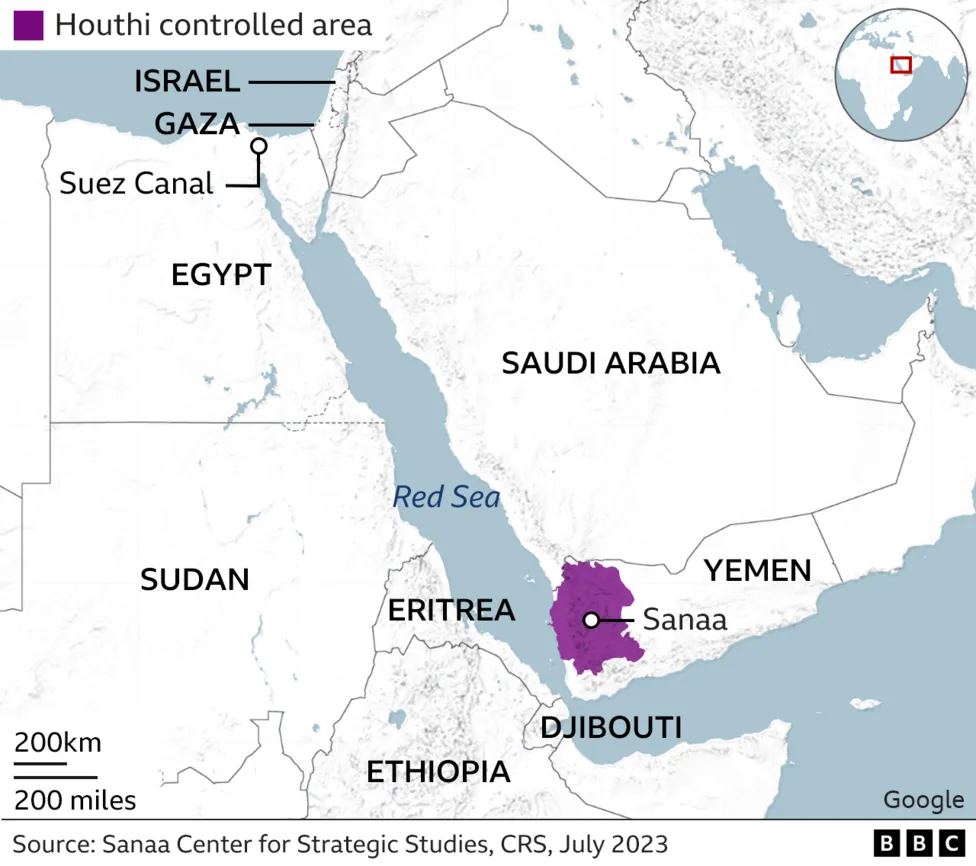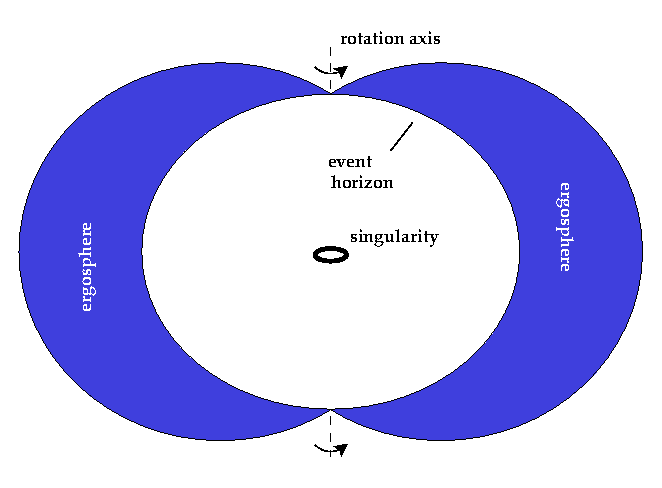Table of Contents
US targets Houthis in Yemen
Context: The US and British militaries bombed multiple targets in locations used by the Iranian-backed Houthis in Yemen.
| More in News |
| It was the second wave of major U.S. operations against Iran-linked groups following a deadly drone strike in Jordan that killed three American soldiers. |
About Houthis
- The Houthis, officially known as Ansarullah (Partisans of God), are an armed religious and political movement in Yemen.
- Emerged in the 1990s, when its leader, Hussein al-Houthi, launched “Believing Youth,” a religious revival movement for a centuries-old subsect of Shia Islam called Zaidism.
- The movement advocates for regional autonomy for Zaidis in northern Yemen.
- They have been in conflict with Yemen’s Sunni-majority government since 2004.
- In September 2014, the Houthis took over the Yemeni capital, Sanaa, and by 2016 had control over much of North-western Yemen.
- The movement started as a means to maintain tribal autonomy in northern Yemen and to oppose Western influence in the Middle East.
- Currently, they seek a greater role in the Yemeni government and continue to champion Zaidi minority interests.

We’re now on WhatsApp. Click to Join
Ergosphere
Context: There is a theoretical proposition that objects sent into the ergosphere could gain energy by accelerating along the black hole’s rotational direction and then escaping, moving faster than when they entered.
About Ergosphere
- Black holes: They form from the remnants of massive stars that have exhausted their nuclear fuel and undergo a catastrophic collapse, leading to a singularity at their core.
- It has two main parts:
- The singularity: At the centre of the black hole and contains its mass.
- The event horizon: The boundary where the escape velocity from the mass is the speed of light.
- Ergosphere: Exists outside the outer event horizon of a rotating black hole.
- Distorted shape due to black hole’s rotation.
- Escape possible with sufficient velocity (unlike within the event horizon).
- Named after the Greek word ergon (means work) due to potential energy/matter extraction.
- It has two main parts:

| PYQ |
| Q. The terms ‘Event Horizon’, ‘Singularity’, ‘String Theory’ and ‘Standard Model’ are sometimes seen in the news in the context of.
(a) Observation and understanding of the Universe (b) Study of the solar and the lunar eclipses (c) Placing satellites in the orbit of the Earth (d) Origin and evolution of living organisms on the Earth Answer: Option (a) |
Microcredentials
Context: Higher Education Institutes (HEIs) in India are facing the challenge of bridging the gap between the academic knowledge provided and the practical skills required for employability. This gap highlights the need for HEIs to actively connect students with future career opportunities and relevant job markets.
Introduction to Micro-Credentials
- Micro-credentials are emerging as a solution to this challenge, offering short-duration learning opportunities that focus on acquiring modern, ‘just-in-time’ skills and competencies.
- These are validated through reliable assessments and are available in various formats including online, physical, and hybrid modes.
- Unlike traditional degrees (macro-credentials) that take years to complete, micro-credentials provide focused learning outcomes in a shorter time frame, catering also to life-long learners and working professionals.
Enhancing Employability through Micro-Credentials
- Changing Hiring Practices: The job market is increasingly valuing skills over traditional degrees, leading to a rise in the endorsement of micro-credentials.
- This shift necessitates a reevaluation of educational strategies by HEIs to make students more adaptable and skilled.
- Credit System and Recognition: Micro-credentials offer a flexible credit system that aligns with conventional higher education credits, making them universally recognizable and validatable.
- India’s National Credit Framework (NCrF) and Academic Bank of Credits (ABC) further facilitate the portability and stacking of these micro-credentials, enhancing their appeal and utility.
- Quality Assurance and Trust: Ensuring the quality and reliability of micro-credentials is crucial.
- This involves aligning them with higher education standards in delivery, assessment, and awarding qualifications to foster trust and credibility among employers and educational institutions.
Future Prospects and Demand
With the National Education Policy 2020 emphasising skill-based education and employers seeking skilled graduates, the demand for micro-credentials is expected to grow. HEIs must adapt by integrating micro-credentials into their offerings, making them a strategic element of their educational objectives.
Panchayats – Revenue Concerns
Context: The RBI report titled ‘Finances of Panchayati Raj Institutions’ showed that only 1% of the revenue of panchayats was self-generated, with the rest being raised as grants from the State and the Centre.
| Fact |
|
Key Findings of the RBI Report on Panchayati Raj Finances (2022-23)
Overall Revenue of Panchayats:
- Panchayats’ total revenue: ₹35,354 crore
- Own tax revenue: ₹737 crore
- Non-tax revenue: ₹1,494 crore
- Grants: ₹32,847 crore
- Central government grants: ₹24,699 crore
- State government grants: ₹8,148 crore
Average Revenue per Panchayat:
- National average: ₹21,000 (own tax) + ₹73,000 (non-tax) + ₹1.7 lakh (Central grants) + ₹3.25 lakh (State grants)
- Wide variations across states:
- Kerala: ₹60 lakh+
- West Bengal: ₹57 lakh
- Andhra Pradesh, Haryana, etc.: Less than ₹6 lakh
- Share in State revenue- State wise:
- Andhra Pradesh: 0.1%
- Uttar Pradesh:5% (highest)


 Utkal Divas 2025: Odisha Foundation Day ...
Utkal Divas 2025: Odisha Foundation Day ...
 List of Military Exercises of India 2024...
List of Military Exercises of India 2024...
 GPS Spoofing and Its Impact in India: A ...
GPS Spoofing and Its Impact in India: A ...





















